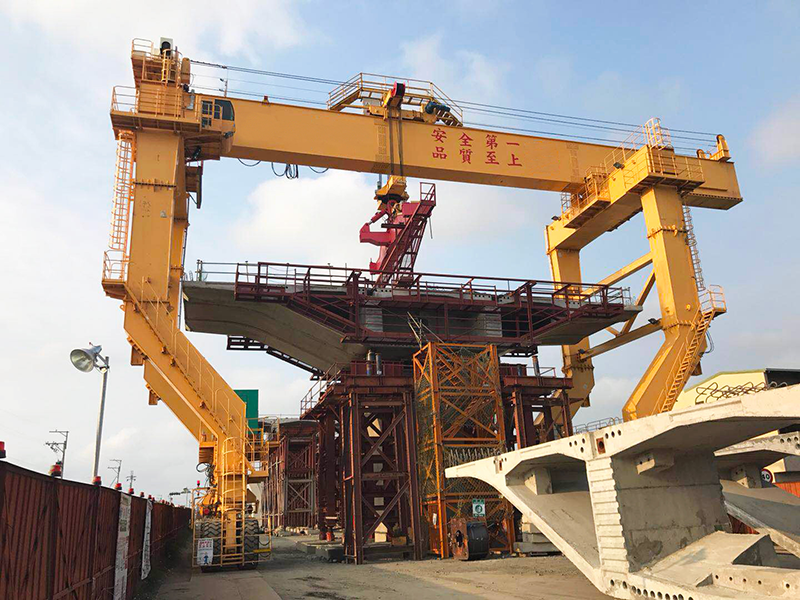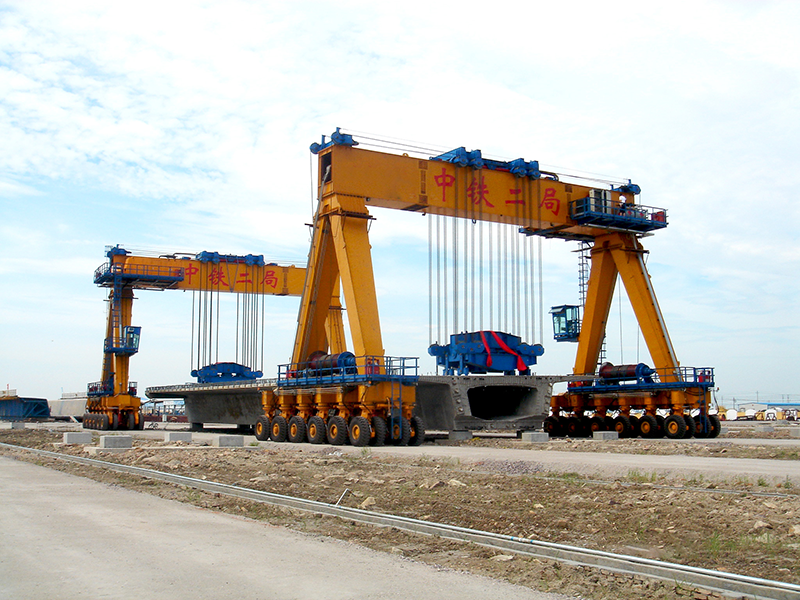Straddle cranes have become indispensable in the construction industry, playing a pivotal role in the efficient movement of heavy materials and equipment within construction sites. These specialized cranes offer a range of advantages that contribute to increased productivity, enhanced safety, and improved operational flexibility. In this article, we will delve into the key advantages of using straddle cranes in construction.

Versatility in Handling Various Loads:
Straddle cranes are designed to handle a diverse range of loads, from heavy construction materials to large equipment. The versatile design of straddle cranes allows them to lift and transport materials of different shapes and sizes, making them an ideal choice for construction projects with varying requirements.
Excellent Maneuverability:
Straddle cranes are known for their exceptional maneuverability, enabling them to navigate through construction sites with ease. Their ability to move in multiple directions and rotate on their axis makes them suitable for confined spaces, a common challenge in construction environments.
Increased Efficiency and Productivity:
The efficiency of straddle cranes significantly contributes to improved productivity on construction sites. These cranes can swiftly move materials from one location to another, reducing downtime and optimizing workflow. The quick and precise handling of loads translates into faster project completion times.
Reduced Manual Labor:
By automating the lifting and transporting of heavy materials, straddle cranes help reduce the reliance on manual labor. This not only minimizes the risk of injuries associated with manual material handling but also allows human resources to be deployed for more skilled and strategic tasks.
Adaptability to Different Terrains:
Construction sites often present challenging terrains, and straddle cranes are built to adapt. Whether it’s uneven ground, rough surfaces, or irregular landscapes, these cranes can operate effectively, ensuring a seamless workflow in diverse construction environments.

Cost-Effective Material Handling:
Straddle cranes contribute to cost-effectiveness by streamlining material handling processes. Their efficiency and versatility translate into savings on labor costs, reduced project timelines, and minimized risks of material damage during transportation.
Enhanced Safety Measures:
Safety is paramount in the construction industry, and straddle carriers are equipped with features to ensure a secure working environment. Built-in safety systems, such as overload protection and anti-collision mechanisms, help prevent accidents and protect both personnel and materials.
Minimized Environmental Impact:
Straddle cranes are designed with energy efficiency in mind, minimizing their environmental footprint. Electrically powered options are available, reducing emissions and noise levels on construction sites, which is especially crucial in urban settings where environmental regulations are stringent.
Customization for Specific Applications:
Straddle cranes can be customized to suit the specific needs of construction projects. Whether it’s adapting the lifting capacity, adding specialized attachments, or incorporating automation features, these cranes can be tailored to meet the unique requirements of different construction applications.
Operational Consistency in Various Weather Conditions:
Construction projects are often exposed to the elements, and straddle cranes are built to withstand different weather conditions. Their robust design ensures operational consistency, reducing the impact of adverse weather on project timelines.
Conclusion:
In conclusion, the advantages of using straddle cranes in construction are multifaceted, encompassing efficiency, versatility, safety, and environmental considerations. As the construction industry continues to evolve, the role of straddle cranes becomes increasingly significant in meeting the demands of modern construction projects. Their ability to adapt to diverse conditions, optimize material handling, and enhance overall productivity positions straddle cranes as essential assets in the construction industry’s quest for efficiency and safety.